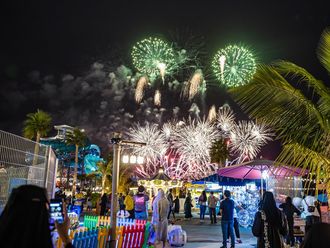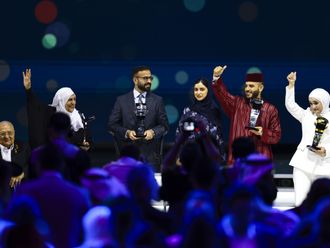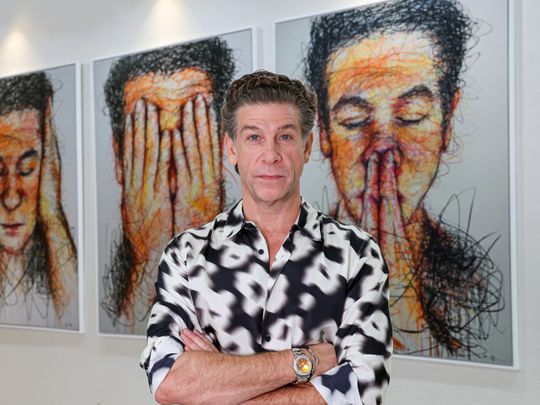
Dubai: A Kuwaiti doctor in Dubai has made the cut not only as a sought-after plastic surgeon in the region, but also as a pioneering collector of medical antiques, that include primitive amputation saws, the world’s first stethoscope, an iron lung, the earliest hearing aids and emergency medical kits from the Second World War.
Sharing his unlikely passion in an exclusive interview with Gulf News, Dr Adel Quttainah, who runs a chain of hospitals across the GCC, said his fascination with yesteryear medical tools began when he first came across a “scarificator” while studying medicine back in Ireland.
“The instrument was around 200 years old, and it was apparently used to cut the vein of an ailing person to sacrifice a certain amount of the patient’s ‘bad’ blood into a bowl,” he said, adding how blood-letting was a common mode of treatment up until the late 19th century, aimed at driving out the “evil” in a patient.
As Dr Quttainah journeyed back in time, he said he was drawn to more medical tools from the past, as they offered him a rare glimpse into the evolution of medicine. He soon found himself becoming a hobbyist, sourcing and collecting surgical and other medical equipment from different parts of the world. In 2017, when his personal collection of tools crossed 400, he decided to share it with the public by launching the first-of-its-kind open medical museum in the GCC. Currently located in Kuwait, the unique museum will soon expand to Dubai, he noted.
The second of three children born to a Kuwaiti father and a Danish mother, Dr Quttainah credits his parents for nurturing the curious mind in him.
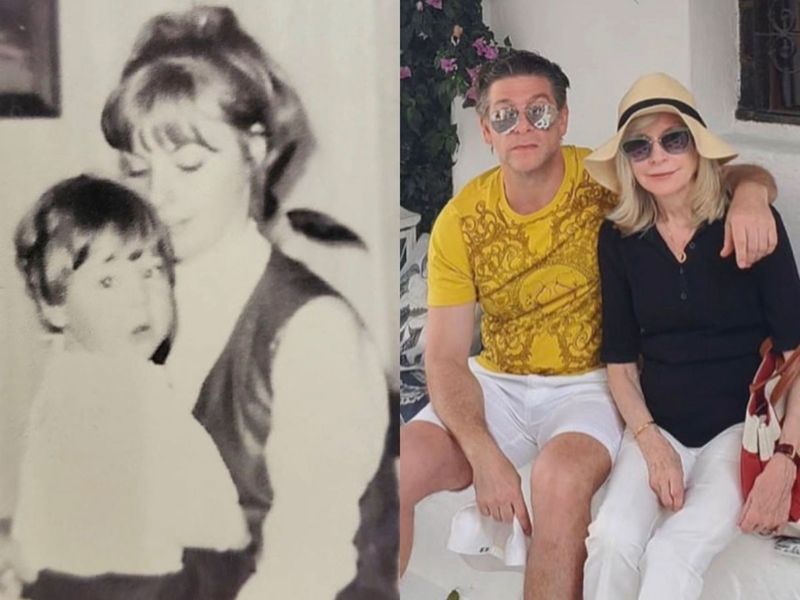
“I had a happy childhood and was a good student. I planned to study engineering like my father, but it looked like my family conspired and sent me to medical school instead,” he laughed.
It was just as well as Dr Quttainah moved from strength to strength, and went on to complete three fellowships in cosmetic surgery, micro-surgery and research in Canada, before briefly working in Saudi Arabia and returning to Kuwait where he set up the first hospital, followed by two more in Qatar and Dubai.
But despite his demanding schedule as a pan-geographic plastic surgeon, Dr Quttainah finds time to pursue his hobby and enlighten anyone willing to listen about his “medical artefacts”, which he has also painstakingly documented in a book titled Medical Museum.
“Many of today’s treatments are directly based on theories and equipment developed years ago. While some of the simplest inventions continue to be the basic standard care for many illnesses, other devices are completely outdated,” he remarked.
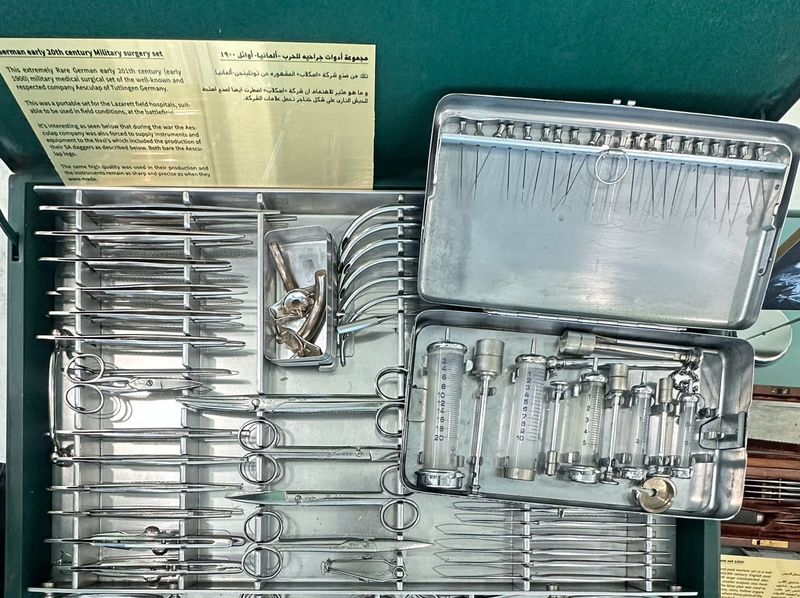
Each of the antiques in his collection tells a gripping story.
An Iron Lung that Dr Quttainah acquired dates back to the 1950s when polio was a raging epidemic. He explained how the machine was a mechanical respirator which enclosed most of the patient’s body, varying the air pressure in the enclosed space to assist in breathing when muscle control was lost.

Pointing out that it was not only the 1840s that anaesthesia was developed, Dr Quttainah shared the history behind a wide range of carpentry-type saws which were used for amputation in days bygone, the associated problem of blood loss and pain being managed by tying off blood vessels or using hot irons and burning oils.
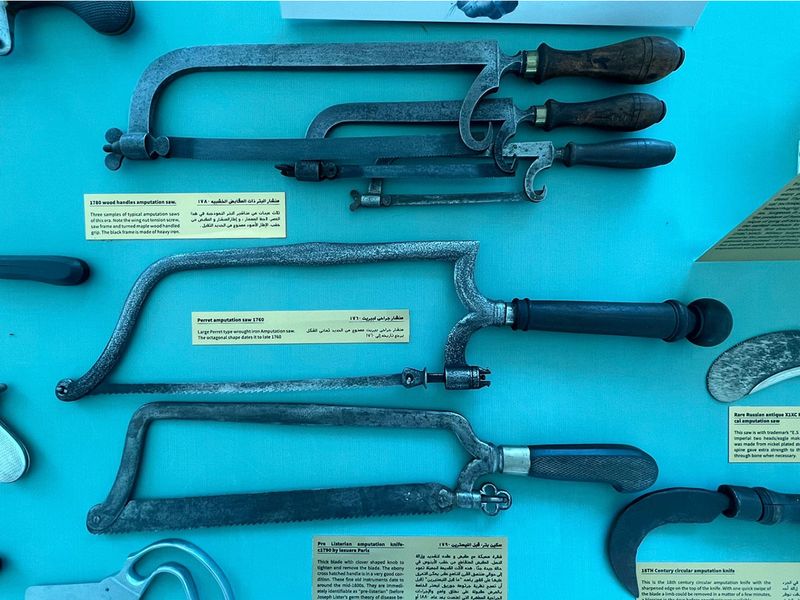
Narrating the circumstances under which the world’s first stethoscope was invented, Dr Quttainah spoke of how the inventor, French physician Rene Laennec, was too embarrassed to place his ear on the chest of a female patient for an immediate auscultation as was the practice at the time.
“So he remembered a trick he had learned as a child and rolled 24 sheets of paper, placing one end to his ear and the other on the woman’s chest to hear the sounds within loud and clear,” he said, adding that the rolls of paper were subsequently replaced by a hollow wooden cylinder.
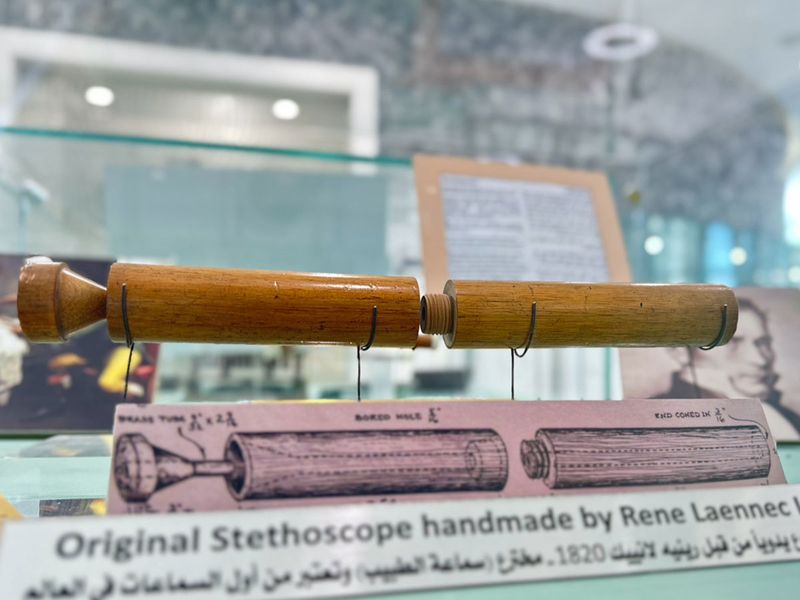
Similarly, the earliest ear trumpets make for a delightful tale as the funnel-shaped devices were used as hearing aids since they could collect sound waves and lead them into the ear.
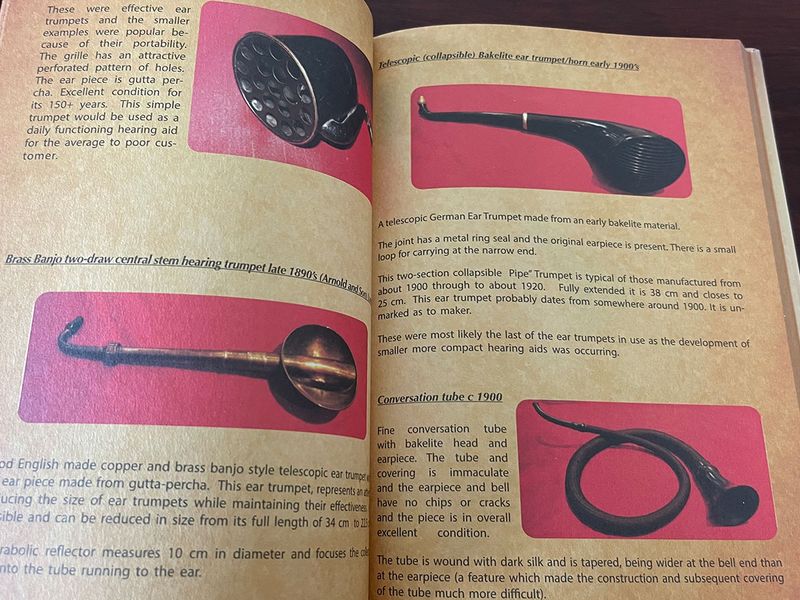
Another curious piece in the collection which Dr Quttainah shared is a “nose shaper” used by “a pioneer nose shaping specialist” in the early 1900s.
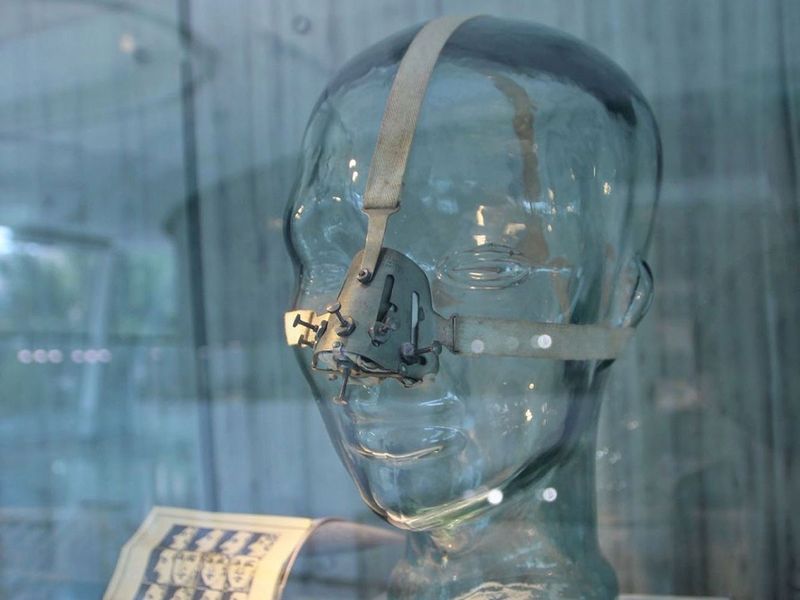
Created to be worn at night, the metallic mask with screws would be adjusted over time in the belief that it would reshape the nose. The instrument was even patented in the 1920s, the doctor added.
Asked where he sources these pieces from, Dr Quttainah said he began by getting in touch with hospitals, collectors and museums the world over. But today, his reputation as a medical antique collector has grown far and wide, and people with rare pieces contact him themselves.
Of course, there’s a huge cost to the acquisitions, but the doctor considers them “priceless”. Sometimes, there are also logistical challenges that must be overcome as was the case of a life-sized dissectable wax model of the Anatomical Venus which Dr Quttainah bought for $120,000 in Berlin when it arrived during the peak of summer in Kuwait.
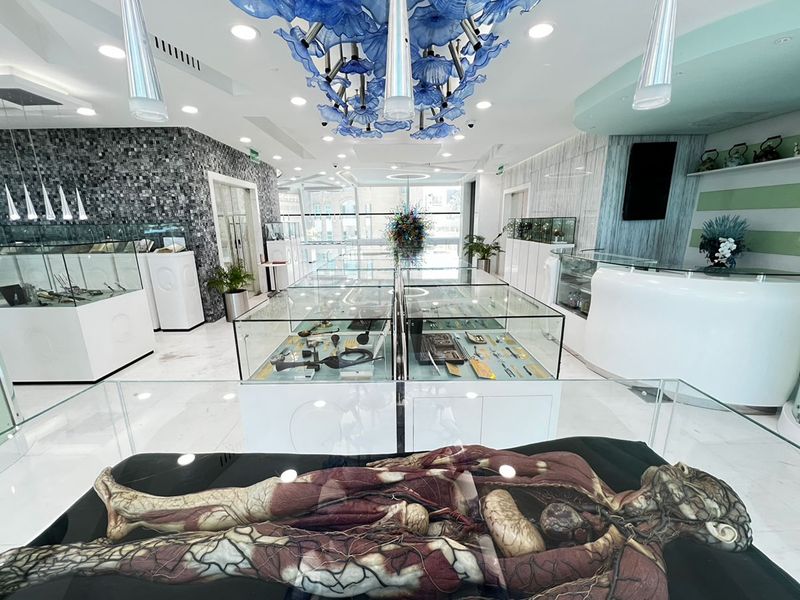
The doctor’s collection also features some rare medical books and manuscripts like the 1550 publication of the second century physiologist and philosopher Claudius Galen and an Arabic manuscript by David bin Omar Antioch.
Talking about a bestseller, The System of Surgery, by Dr Benjamin Bell, the founding father the Edinbugh School of Surgery, Dr Quttainah made a reference to Sir Arthur Conan Doyle, who was a medical student under Dr Jospeh Bell, the great grandson of Dr Benjamin Bell. Apparently the well-known author applied Dr Bell’s keen investigative observations of a patient to the character of Sherlock Homes as we know him today.
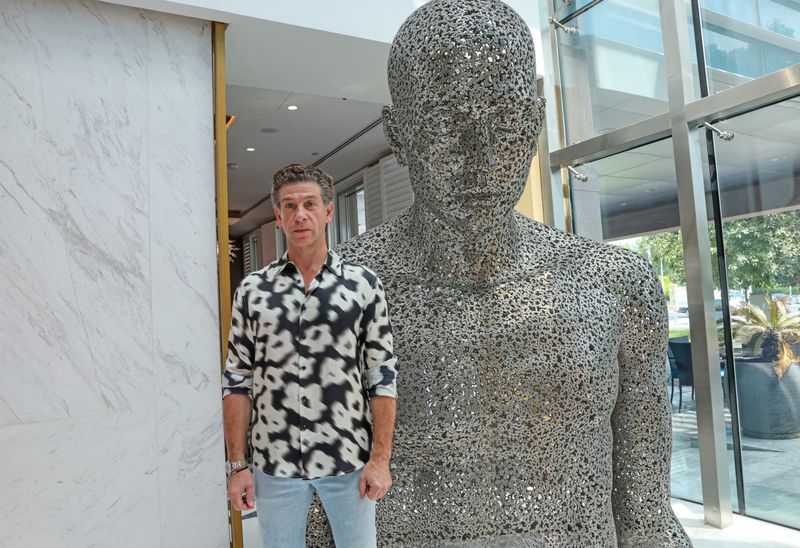
Now, just when you think Dr Quttainah has so much to share about his precious medical possessions, it emerges that the father of three has other passions too – as a collector of luxury supercars and art. That calls for another story.
A peep into Dr Adel’s Garage
There’s a video on Dr Adel’s Quttainah’s Insta account that, in a lighter vein, talks about how his staff know when he is in the house. No guesses there as he roars into the Quttainah Speciality Hospital on Al Wasl Road in a blood red supercar.
It turns out that the customised McLaren is just one of the many super luxury cars in his collection at Adel’s Garage, back in hometown Kuwait.
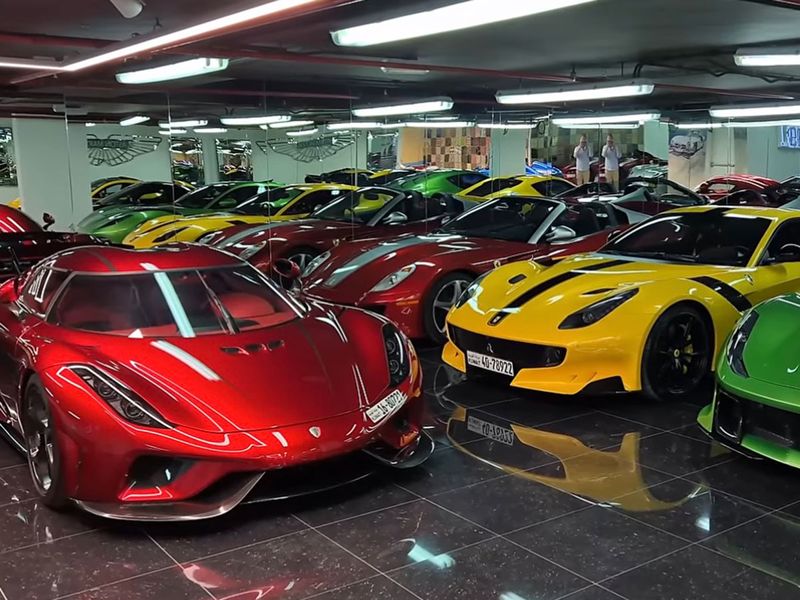
Ask him how many cars he owns, and he says in all seriousness: “A few”. Clearly, that is a relative term looking at the long list of his cars.
Among the supercars he owns are the Mercedes SLR Stirling Moss; Mclaren Elva; Ferrari Monza SP2; Aston MartinV12 Speedster; Koenigsegg Regera; Mclaren Senna; Mclaren P1; Mclaren 720s; Ferrari SA APERTA 599; Ferrari F12 TDF; Ferrari 812 Competizione; Ferrari 458 Speciale Aperta; Mercedes AMG One; Aston Martin V12 Zagato; Aston Martin VANQUISH Zagato; Aston Martin G12; Dodge Viper ACR; Mercedes GTR; Mercedes GTR Pro; Mercedes GTR Black Series; Porsche GT2 RS; Ferrari 328 GTS; DINO 246 GTS ; Ferrari Testarossa 512M; Aston Martin DB5; and Mercedes 3000 SL Gull Wing.
“The fastest car in this collection is the Kornigsegg Regera; the lightest is the Mcklaren Elva; the biggest Adrenalin rush comes from the McLaren Senna; and my most favourite is the Aston Martin Speedster,” Dr Quattainah adds.


